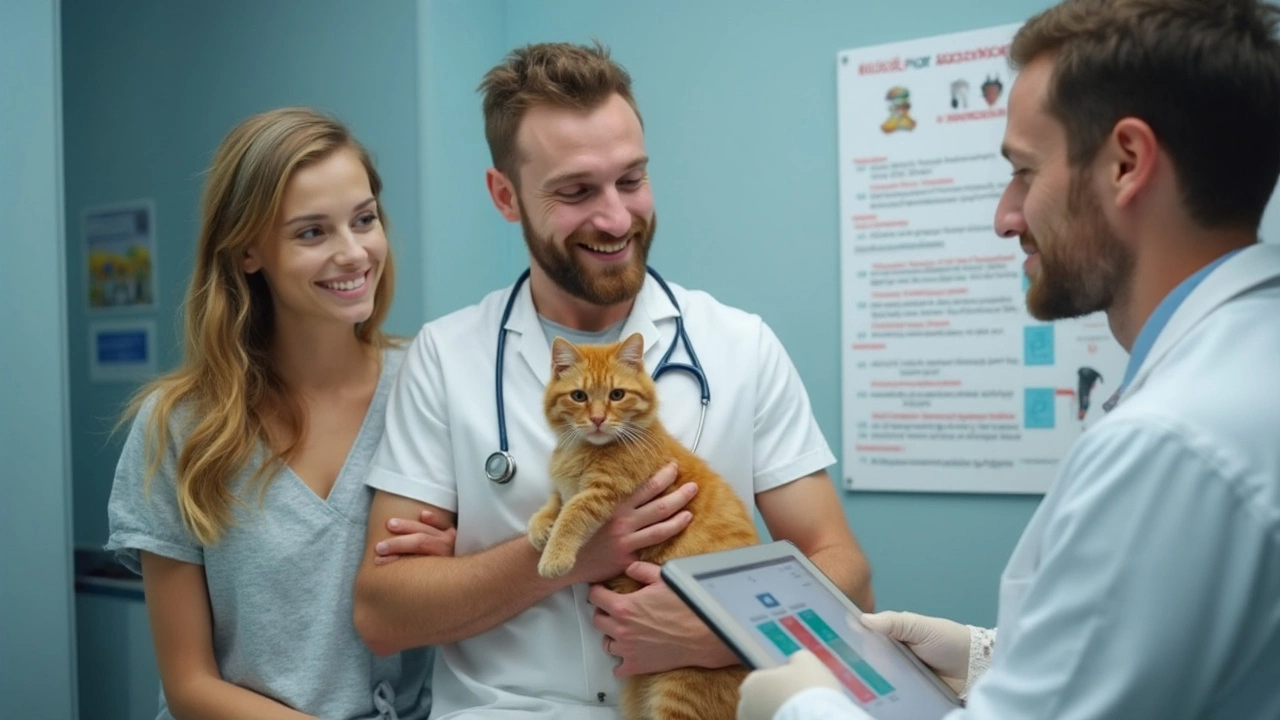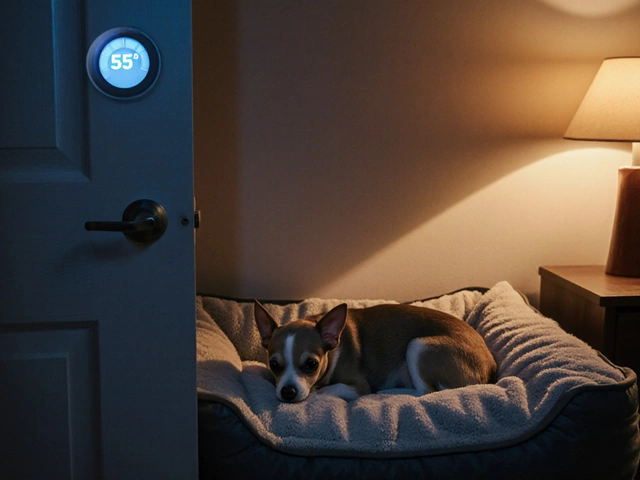Pet owners hear it all the time: 'Keep your pet’s shots up to date.' But what does that actually mean? It’s not just about ticking boxes at the vet. Skipping vaccines can leave your pet open to nasty diseases like parvo or rabies—stuff that’s not just dangerous for them but, in some cases, for humans too. Vaccines are like your pet’s armor, and knowing when they need a booster is just as important as giving it in the first place.
If you’re staring at a jumble of vet reminders and wondering what really matters, you’re not alone. The truth? There’s a calendar to follow, but it’s not always the same for every cat and dog. Puppies and kittens need shots more often at first. As they grow, the schedule changes. Adult pets need fewer boosters, but you can’t completely ignore them, even if your pet seems healthy.
- Why Vaccines Matter for Pets
- The Standard Vaccine Calendar
- Factors That Change the Timeline
- Smart Tips for Stress-Free Vaccination
Why Vaccines Matter for Pets
When you think about keeping pets healthy, pet vaccinations are right up there with food and exercise. Vaccines teach a pet’s immune system to fight off diseases so they don’t end up seriously sick—or in some cases, don’t die from stuff that’s actually preventable. Most of the deadly diseases we’re talking about are caused by viruses and bacteria that are still out there in parks, on sidewalks, or even in the backyard.
Here’s the thing: some pet diseases can spread fast. Take parvovirus in dogs—there’s no cure and puppies especially can die within days. Vaccines for things like rabies protect not just your pet, but your whole family. Rabies still kills nearly 60,000 people a year around the world because of bites from unvaccinated animals.
Check out how effective core shots can be at cutting down disease risk:
| Disease | Before Vaccination (US) | Now (with Widespread Vaccines) |
|---|---|---|
| Canine Distemper | Thousands of cases yearly | Rare |
| Parvovirus (Dogs) | Common, deadly | Uncommon in vaccinated dogs |
| Rabies (Pets to Humans) | Hundreds per year | Less than 3 per year |
Not every shot is about preventing death. Some vaccines mean fewer vet visits, less time off work, or less heartbreak from watching your pet suffer. For indoor cats, it might feel like overkill, but even something as simple as a cracked window or a trip to the groomer can expose them to viruses.
If money’s tight, you might be tempted to skip shots. But treating severe illness (like parvo, which can rack up thousands in vet bills) almost always costs more. And some places, like boarding kennels or city dog parks, actually require proof of vaccination, so keeping up protects your wallet and your pet’s social life, too.
The Standard Vaccine Calendar
It’s easy to get lost in all the names and timelines, but breaking down a pet vaccinations schedule makes it less overwhelming. Vets typically separate vaccines into two buckets: core and non-core. Core vaccines are must-haves—they keep your pet safe from the nastiest illnesses. Non-core shots depend on your pet’s lifestyle, like if you go hiking a lot or board your pet often.
Here’s how most vet clinics lay out the usual vaccine timeline for cats and dogs:
- Puppies and Kittens: These guys need shots early and often. Typically, they start at 6-8 weeks old, then get boosters every 3-4 weeks until they’re 16 weeks old.
- Adult Dogs and Cats: After those initial puppy or kitten shots, the next round is at about 1 year of age. After that, most core boosters happen every 1–3 years.
Let’s break this down even further by looking at standard schedules for each:
| Pet | Vaccine | Age to Start | Booster Frequency |
|---|---|---|---|
| Dog | Rabies | 12-16 weeks | 1 year, then every 1–3 years |
| Dog | Distemper/Parvo (DHPP) | 6–8 weeks | 3–4 week intervals to 16 weeks, then yearly or every 3 years |
| Cat | Rabies | 12–16 weeks | 1 year, then every 1–3 years |
| Cat | FVRCP Combo | 6–8 weeks | 3–4 week intervals to 16 weeks, then yearly or every 3 years |
Non-core vaccines like Bordetella (kennel cough for dogs) or feline leukemia are more on an as-needed basis, especially if your pet hangs around other animals or spends time outside. Your vet can help decide if your pet needs these extras.
One tip: Always check with your local laws. Some places require rabies shots every year, while others say every three years is enough. And keep that little vaccination certificate. Not only does your vet want proof, but dog parks, kennels, and even some landlords will ask to see those records too.

Factors That Change the Timeline
There’s no universal calendar for pet vaccinations because real life rarely fits neatly into charts. Several things can change how often your dog or cat needs shots. It’s not just about age—other factors matter just as much.
Pet vaccinations can be affected by:
- Age: Puppies and kittens start with a series of vaccines for a reason: their immune systems are still new. Older pets, believe it or not, sometimes need extra boosters if their immunity drops.
- Health Conditions: Pets dealing with chronic illnesses (like kidney disease or diabetes) may need a modified schedule. Vets sometimes delay certain shots if your animal isn’t feeling well.
- Lifestyle: Does your cat always stay indoors? Does your dog love the dog park? Pets that travel, go outside, or visit kennels may need more vaccines—like Bordetella for dogs or feline leukemia for cats.
- Local Laws: Rabies rules are strict, and they vary by location. Some states require yearly rabies shots, while others stick to every three years.
- Previous Vaccine History: If you adopted a pet or missed a shot, your vet might recommend starting the series over or adding another booster for full protection.
For those who want details, here’s a quick look at how vaccines can shift depending on your pet’s situation:
| Factor | How vaccine schedule may change |
|---|---|
| Young puppy/kitten | Core shots every 3-4 weeks from 6 to 16 weeks old |
| Senior pet | May need titers to check immunity before skipping boosters |
| Chronic health issues | Some shots may be delayed or skipped; customized by vet |
| Frequent boarder/traveler | May need extra non-core shots (Bordetella, influenza, etc.) |
| Missed past boosters | May have to restart series for some vaccines |
| State/local law | Dictates rabies shot frequency |
If you’re ever unsure, ask your vet! They can pull your pet’s records and give you a clear, written schedule to follow. It can feel a bit much to keep track of, but tailoring the shots could save your pet a lot of trouble down the line.
Smart Tips for Stress-Free Vaccination
Worried about getting your pet vaccinated without all the drama? Trust me, you’re not the only one. Shots can be quick and simple when you have a plan. Here’s how you can keep things easy for both you and your pet.
- Pet vaccinations are less stressful if you stick to a routine—pick the same vet if you can. Familiar places and faces help pets stay calm.
- Always bring a favorite toy or treat. A little nibble or a squeaky ball is the best distraction in the waiting room (or even on the exam table).
- Mark vaccination dates on your phone or a wall calendar. Free apps like Pawtrack make tracking shots a breeze. If you miss an appointment, call your vet—don’t just skip it, even by a month.
- Before the visit, let your pet burn off energy. A tired dog or cat will handle new situations better and might not fuss as much with the vet.
- Don’t feed them a huge meal right beforehand. Some pets get upset bellies after shots, so keep things light.
Don’t be shy with questions. Ask your vet about side effects and what to watch for after each vaccine. Most pets do fine, but a little swelling or sluggishness right after shots happens—weird stuff like swelling that won’t go away or nonstop scratching means you should call the clinic.
And here’s something to remember for multi-pet homes: Stagger vaccination days. Juggling three excited animals in one visit is no one’s idea of a good time. Give everyone their own calm moment—makes things way easier for you and your pets.







